Secondary school pupils in Peterhead and Fraserburgh have been getting acquainted with seafood.
They’ve been learning how it is caught and reaches their plates, and how eating more of it is good for them.
The special seafood workshops are a fun diversion from their usual routines.
But they are also critically important for making sure one of the north-east’s key industries has a prosperous future.
Scottish fishing chiefs have insisted this, in turn, is vital for the UK’s long-term food security.
Scottish seafood challenges
Covid, Brexit, supply chain issues and Russia’s invasion of Ukraine have all heaped pressure on the industry in recent years – impacting its access to key global markets.
And plans for multiple wind farms in the North Sea threaten to squeeze out fishing.
These challenges, together with acute labour shortages, have prompted the Scottish catch and processing sectors to highlight the environmental, healthy eating and food security credentials of fishing to whoever will listen as they also seek out new markets.
And that’s where this week’s Seafood in Schools workshops in Peterhead and Fraserburgh come in.
It is hoped some of the pupils may be tempted to consider careers in the seafood sector.
Organised by trade body Seafood Scotland, another goal is to inspire some of our young people to be more adventurous in their tastes and help open up a surprisingly undeveloped UK market.
Cookery demonstrations gave youngsters the chance to try something new.
The big UK market challenge
Historically, most of Scotland’s rich larder of shellfish – including prawns, mussels, crabs, lobsters and increasingly abundant squid – has ended up overseas.
Despite our islands being surrounded by water, many Britons are notoriously averse to eating sea creatures other than cod, haddock, salmon, tinned tuna or the occasional prawn.
Such is the lack of consumer demand in the UK, fish counters have vanished from many of our supermarkets.
But British consumers may yet hold the key to the future of the Scottish seafood industry by reducing its reliance on exports.
There is more to life in our seas than cod and haddock.”
Struan Stevenson, former MEP
Speaking on this topic back in 2013, the then Tory MEP Struan Stevenson summed up the scale of the challenge.
Highlighting the great diversity of seafood which the vast majority of UK shoppers tend to shun, Mr Stevenson added: ““There is more to life in our seas than cod and haddock.”
Jeni Adamson, industry engagement manager, Seafood Scotland, told The Press and Journal the Peterhead and Fraserburgh school pupils could help change eating habits.
She added: “Our Seafood in Schools initiative allows us to inform secondary students and teachers about the nutritional benefits of Scotland’s delicious seafood.
“It also gives us an opportunity to open their minds to the diverse range of careers working with seafood, particularly given the skills shortages seen currently across the industry.
“From roles directly involved with catching, landing and processing to jobs in support functions, such as sales and logistics, this initiative empowers young people to see themselves as part of an industry vital to Scotland’s economy.”
Having reached about 800 primary school children last autumn, the initiative is now being rolled out for S2 pupils, starting with Peterhead and Fraserburgh academies.
More cash please
Seafood Scotland is seeking more funding to expand the scheme.
Ms Adamson added: “By introducing this knowledge at a secondary school age, we’re cultivating a future workforce equipped with the skills and passion to drive our seafood industry forward.”
This initiative empowers young people to see themselves as part of an industry vital to Scotland’s economy.”
Jeni Adamson, Seafood Scotland
Peterhead Academy head teacher Gerry McCluskey said the workshops gave the school a “unique opportunity to inform and educate our pupils about the excellent careers available in the seafood and maritime industries, available on our very own doorstep”.
Mr McCluskey added: “This was also a chance for us to highlight and celebrate our rich local traditions and culture, keeping our community heritage at the forefront of the minds of our young people.
“Seafood Scotland’s innovative inputs on preparing local produce, sustainably sourced in our own town, not only outlined the health benefits of eating fresh, high quality, local fish, they also highlighted the vocational opportunities available for our young people in the north-east.”
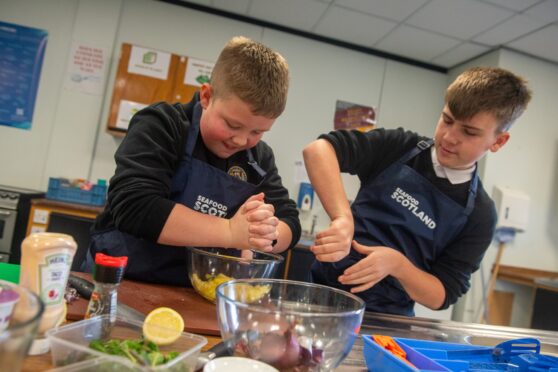
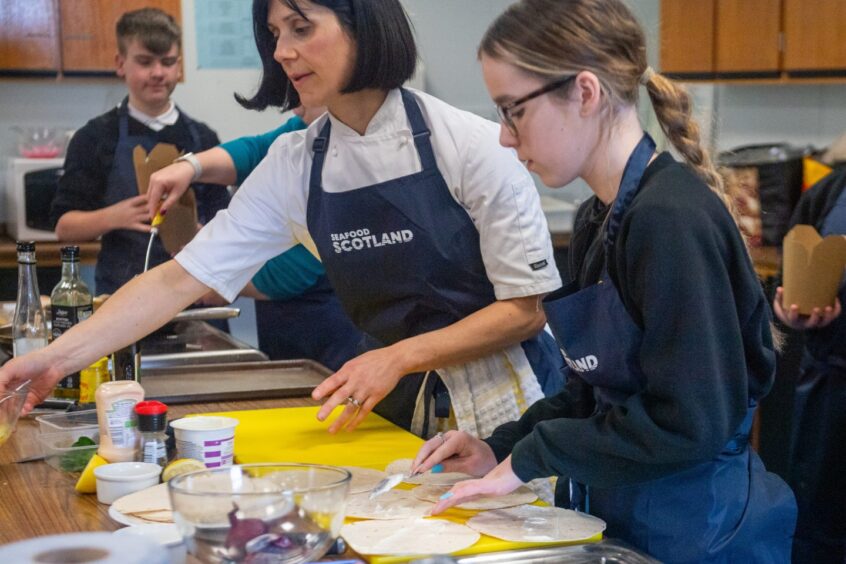
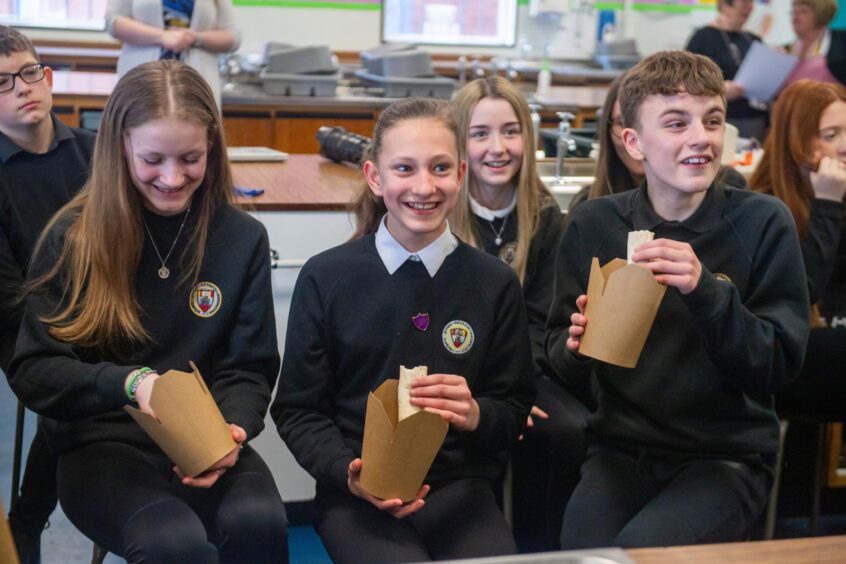
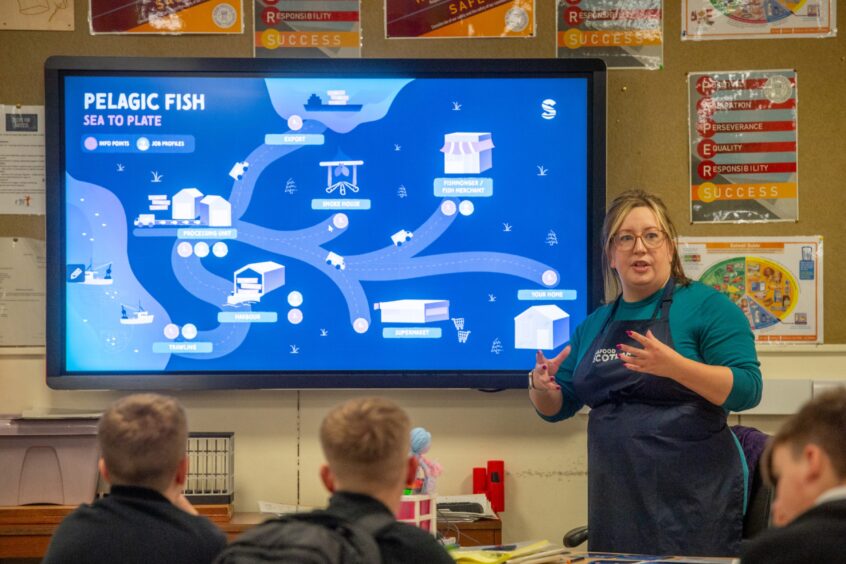
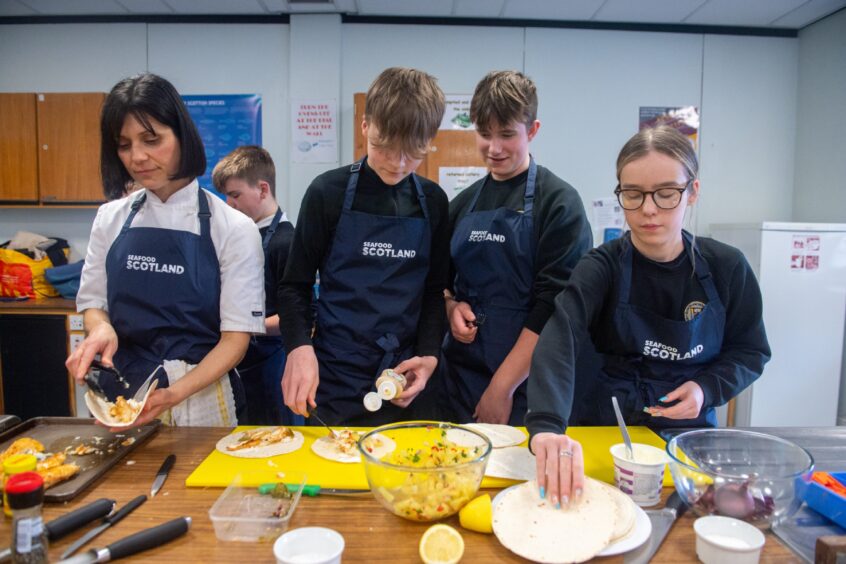
Conversation